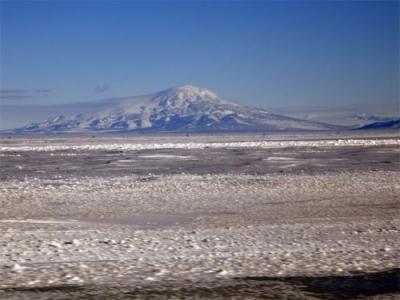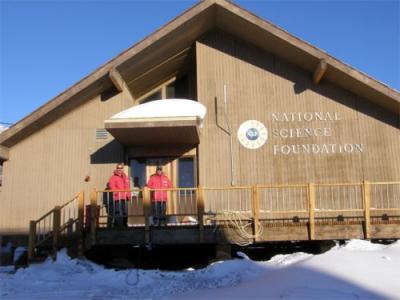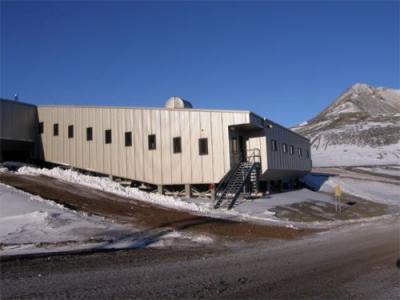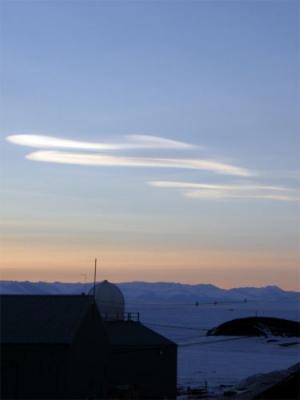Our team completed two on-line trainings before we started on this adventure. We had two more at the CDC before we left, and then a welcome and meeting when we first arrived at McMurdo. Today we had EIGHT more training sessions! I am just going to give a quick overview of the trainings today; I will give more thorough explanations of most of these topics at later dates.
First, we learned how the waste management system works. All trash is sorted and put in appropriate cans and then transported to these larger bins outside. If you recycle at home, you may have several containers. Here they separate into a dozen different categories including burnables, plastics, light metals, food scraps, biohazardous waste (which needs special treatment), etc. All the waste needs to be taken off base if it can’t be safely burned in the incinerator! There is only one ice-breaker ship that comes into McMurdo each year to bring supplies and to take off the waste.

Waste sorting system at McMurdo Station.
Our second training was in the library at Crary Lab, the main science lab at McMurdo. We learned the names of some of the key people at the lab and how they are here to support the science teams. Our lab is on the ground floor (Stage 3) of Crary Lab and we have a great view of Mt. Discovery out our windows across the sea ice where our plane landed.

View of Mt. Discovery from the Crary Lab window.
We then had a session on the Dry Valleys where we will be traveling in late October. The Dry Valleys have been designated an Antarctic Specially Managed Area (ASMA). There are strict rules you have to follow if you go there.
Our fourth session was a science meeting in the Chalet where the National Science Foundation (NSF) folks work. We met all the department heads that will be assisting our science teams. Over the course of this field season there will be over 100 different science projects that are managed out of McMurdo!

The National Science Foundation building, aka The Chalet
Our fifth training was a short tour of Crary Labs where we learned the locations of science and mechanical equipment that we might need. Our sixth training took us to "MacOps” which is where they keep track of everyone and where they are when they leave station to do field work. Many scientists go out for day trips on the sea ice (like us when we start our diving and ROV deployments) and also go out to remote field camps (like we will when we go to New Harbor at the end of this month). You must take radios when you go out and let MacOps know when you leave and when you return. If you don’t remember to call them when you return they will send out search and rescue teams!!! So it is a big no-no to forget to call MacOps and let them know you are safely back.

Crary Lab Building, Phase III - Our lab is on the far right.
Our seventh training was a visit to Rob at the Dive Center where we learned how to use some of the safety and diving equipment. Then, finally, our last training was on how to use the VHF and Satellite Radio systems so we are able to contact MacOps before, during and after our trips away from the station.
We were pretty tired by then, but not too tired to go outside and take some photos of nacreous clouds.

Nacreous clouds
Nacreous clouds are also called polar stratospheric clouds. They form in the winter polar stratosphere at altitudes of 15,000–25,000 meters (50,000–80,000 ft). I’ll try to talk more about these later as they are implicated in the formation of ozone holes! So they may look pretty, but can have some nasty consequences for loss of ozone. (Information on nacreous clouds from Wikipedia.)
Today gave me a HUGE appreciation for the amount of effort and people it takes for science to happen in Antarctica. Some of the people training us had been on our plane to the ice, or maybe just one day ahead of us, and they were completely prepared and very professional in their presentations. There is a feeling of everyone working in the same direction, and mutual regard for the efforts that everyone is making; both to help each other and to enable science to progress. It truly is a remarkable effort in a spectacular place!

